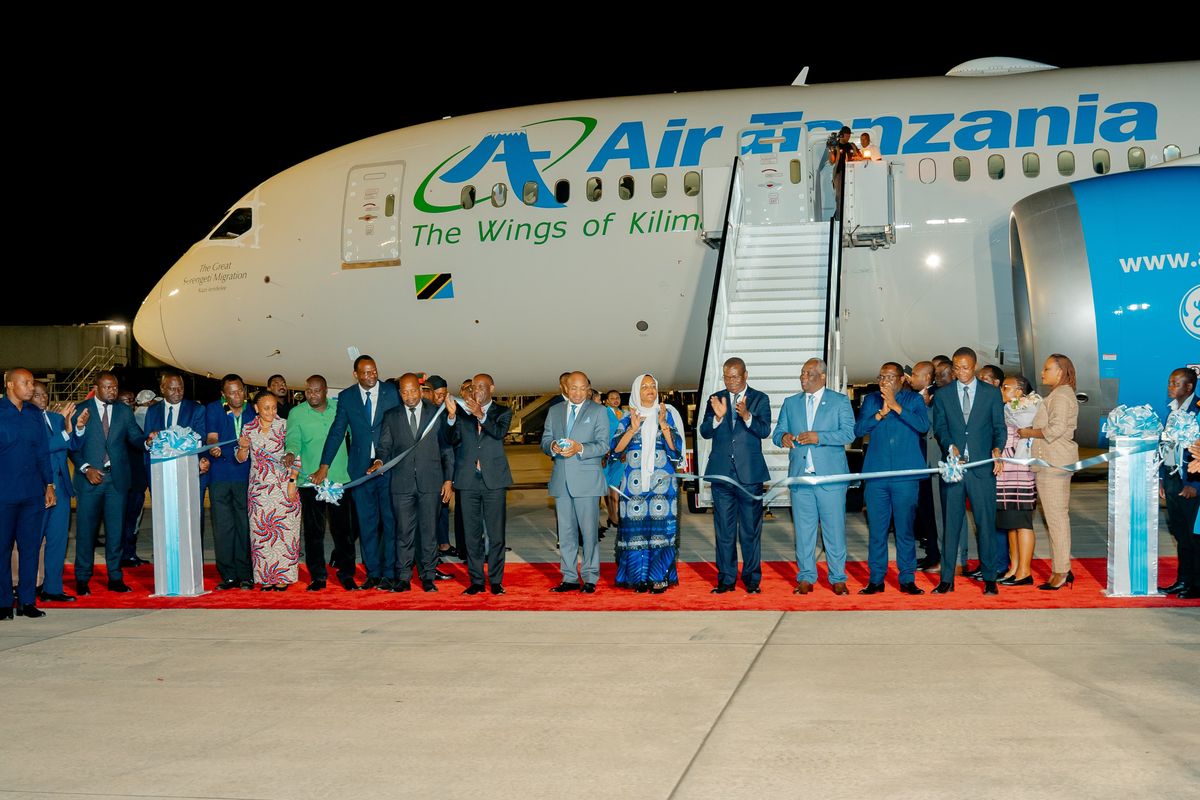Dar es Salaam. Tanzania’s new Boeing 787 Dreamliner has finally arrived home after weather-induced delay.
The aircraft touched down in Zanzibar on Tuesday, August 20, 2024, as government officials and members of the public gathered at the Abeid Aman Karume International Airport to welcome plane.
The new aircraft marks a significant milestone in the country’s efforts to revitalise its national carrier, Air Tanzania Company Ltd (ATCL).
Zanzibar President, Dr Hussein Mwinyi who was the guest of honour at the welcoming event, reaffirmed the government’s commitment to making substantial investments in the aviation sector, including to strengthen the ATCL, developing infrastructure and acquiring advanced air traffic control and weather monitoring equipment to ensure safe and efficient use of the country’s airspace.
“The investment in ATCL is crucial for opening up the country, connecting all regions, and linking Tanzania with both regional and international markets,” said Dr Mwinyi.
He also urged ATCL to explore the possibility of increasing international flights via Zanzibar, which he believes would significantly boost the local economy and attract more tourists to Tanzania.
Despite the progress made, President Mwinyi acknowledged that there were still challenges that needed to be addressed to further strengthen the airline and ensure it can fully realise its potential.
The aircraft was initially scheduled to land on Monday evening but the arrival was pushed back due to Tuesday as the airliner cited adverse weather conditions which made it unsafe to land.
However, the delay did little to dampen the excitement surrounding the event, as the new aircraft represents a significant investment by the Tanzanian government, costing over Sh300 billion.
The Boeing 787 Dreamliner is a long-haul aircraft with a seating capacity of 262 passengers, including 22 seats in business class and 240 in economy class. In addition to its passenger capacity, the aircraft is capable of transporting 15 to 20 tonnes of cargo, depending on the number of passengers on board.
Dr Mwinyi emphasised the critical role of the transport sector in driving Tanzania’s development, particularly in facilitating the movement of goods derived from the blue economy to international markets.
He pointed out that Tanzania is uniquely positioned with a wealth of tourist attractions, making the growth of its tourism market a key priority.
Focusing on Zanzibar, President Mwinyi noted that tourism-related services are vital to the economy, contributing around 30 percent of the island’s national income and creating numerous jobs in the private sector.
He emphasised that the continued success of the tourism industry and the benefits of the blue economy are closely tied to the operational efficiency of ATCL.
“For us to achieve our economic growth goals, having a reliable air transport that aligns with our strategies is essential,” he said, calling for an increase in flights between Pemba and other regions in Tanzania to explore potential in the island.
Speaking at the event, the Minister for Transport, Prof Makame Mbarawa, highlighted the significance of the purchase of the new aircraft, saying it’s part of the government broader strategy to rejuvenate ATCL.
He noted that the Dreamliner was the 15th aircraft acquired by the government since 2016, with eight of these planes being purchased during the current administration.















